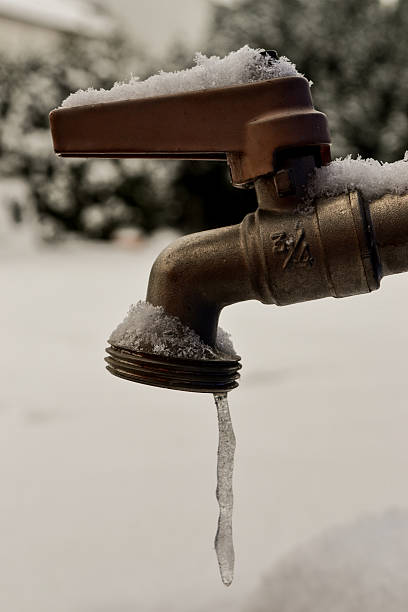Were you in search of facts and techniques about How to prepare your home plumbing for winter weather?

Winter can damage your plumbing, specifically by freezing pipes. Below's how to stop it from occurring and what to do if it does.
Intro
As temperatures decline, the danger of icy pipes rises, potentially causing expensive repairs and water damage. Comprehending just how to stop icy pipes is important for property owners in cold environments.
Understanding Frozen Pipelines
What causes pipelines to freeze?
Pipelines ice up when subjected to temperature levels below 32 ° F (0 ° C) for expanded periods. As water inside the pipelines freezes, it broadens, taxing the pipe wall surfaces and possibly creating them to rupture.
Dangers and damages
Icy pipelines can result in water supply disruptions, home damage, and pricey repair work. Ruptured pipes can flood homes and cause considerable structural damages.
Indicators of Frozen Piping
Recognizing frozen pipelines early can avoid them from bursting.
How to determine icy pipes
Look for reduced water flow from taps, unusual odors or sounds from pipes, and noticeable frost on exposed pipes.
Avoidance Tips
Insulating prone pipes
Wrap pipelines in insulation sleeves or make use of heat tape to secure them from freezing temperature levels. Focus on pipes in unheated or outside locations of the home.
Home heating techniques
Keep interior areas properly heated up, specifically areas with pipes. Open up cupboard doors to enable cozy air to distribute around pipelines under sinks.
Safeguarding Exterior Plumbing
Yard hose pipes and outside taps
Detach and drain pipes yard hoses prior to wintertime. Set up frost-proof faucets or cover outside taps with insulated caps.
What to Do If Your Pipelines Freeze
Immediate activities to take
If you suspect icy pipelines, maintain faucets open to ease pressure as the ice melts. Make use of a hairdryer or towels taken in hot water to thaw pipelines slowly.
Long-Term Solutions
Architectural modifications
Consider rerouting pipelines away from outside walls or unheated areas. Include extra insulation to attic rooms, basements, and crawl spaces.
Updating insulation
Buy top notch insulation for pipes, attics, and wall surfaces. Proper insulation helps preserve regular temperatures and minimizes the threat of frozen pipes.
Final thought
Protecting against frozen pipes needs proactive steps and quick actions. By recognizing the reasons, signs, and preventive measures, property owners can secure their plumbing throughout winter.
6 Proven Ways to Prevent Frozen Pipes and Protect Your Home
Disconnect and Drain Garden Hoses
Before winter arrives, start by disconnecting your garden hoses and draining any remaining water. Close the shut-off valves that supply outdoor hose bibs and leave the outdoor faucet open to allow any residual water to drain. For extra protection, consider using faucet covers throughout the colder months. It’s also important to drain water from any sprinkler supply lines following the manufacturer’s directions.
Insulate Exposed Pipes
Insulating your pipes is an effective way to prevent freezing. Pipe insulation is readily available at home improvement stores and is relatively inexpensive. Pay close attention to pipes in unheated areas such as the attic, basement, crawl spaces, or garage. Apply foam insulation generously to create a buffer against the cold. You can also wrap your pipes in heat tape or thermostat-controlled heat cables for added warmth.
Seal Air Leaks
Inspect your home for any cracks or openings that could let in cold air. Seal any holes around the piping in interior or exterior walls, as well as the sill plates where your home rests on its foundation. Additionally, make sure to keep your garage door closed unless you’re entering or exiting. Leaving it open creates a significant air leak that can lead to frozen pipes.
Allow Warm Air Circulation
During cold snaps, it’s essential to allow warm air to circulate evenly throughout your home. Leave interior doors ajar to promote better airflow. Open kitchen and bathroom cabinets to help distribute heat consistently around the rooms. If you have small children or pets, be sure to remove any household chemicals or potentially harmful cleaners from open cabinets for safety.
Let Faucets Drip
A small trickle of water can make a big difference in preventing ice formation inside your pipes. When temperatures drop significantly, start a drip of water from all faucets served by exposed pipes. This continuous flow helps prevent the water from freezing. Additionally, running a few faucets slightly can relieve pressure inside the pipes, reducing the chances of a rupture if the water inside does freeze.
https://choateshvac.com/6-proven-ways-to-prevent-frozen-pipes-and-protect-your-home/

Do you enjoy more info about How to prepare your home plumbing for winter weather? Make a remark below. We will be delighted to find out your thoughts about this content. Hoping that you come back again later on. Those who enjoyed reading our blog entry kindly make sure you remember to pass it around. Thank you for going through it.
Pricing
Comments on “Important Advice for Preventing Frozen Plumbing in Cold Weather Conditions”